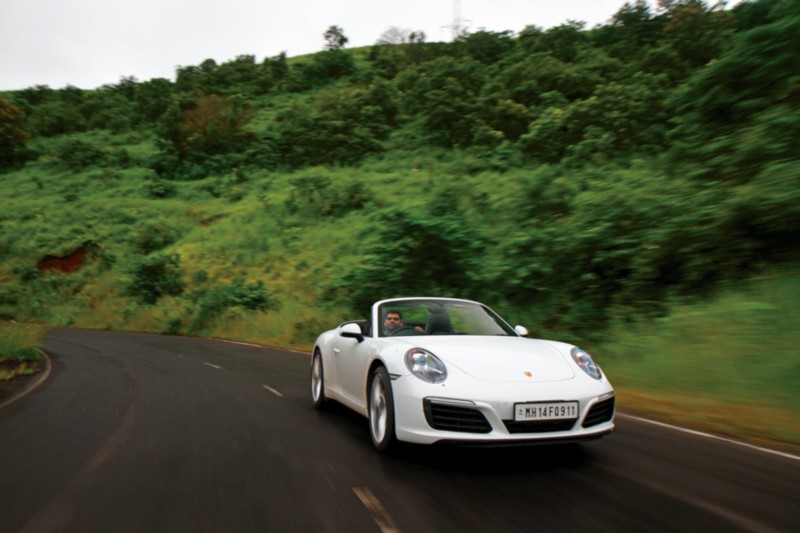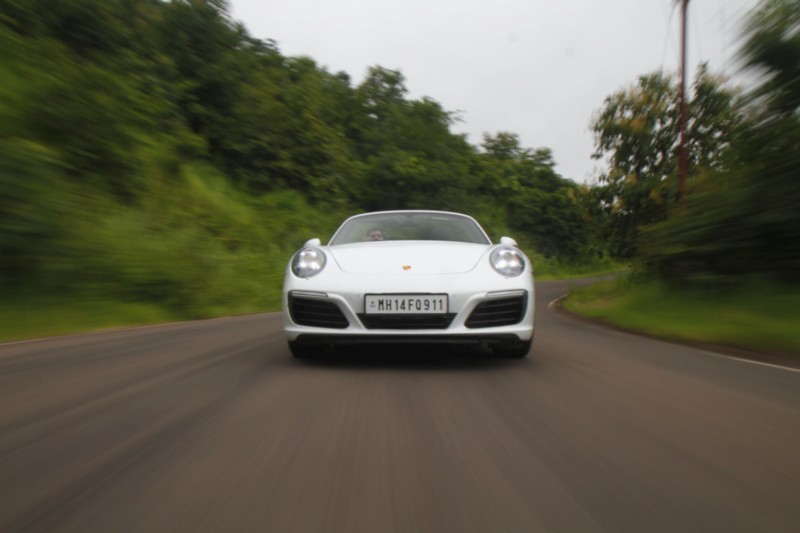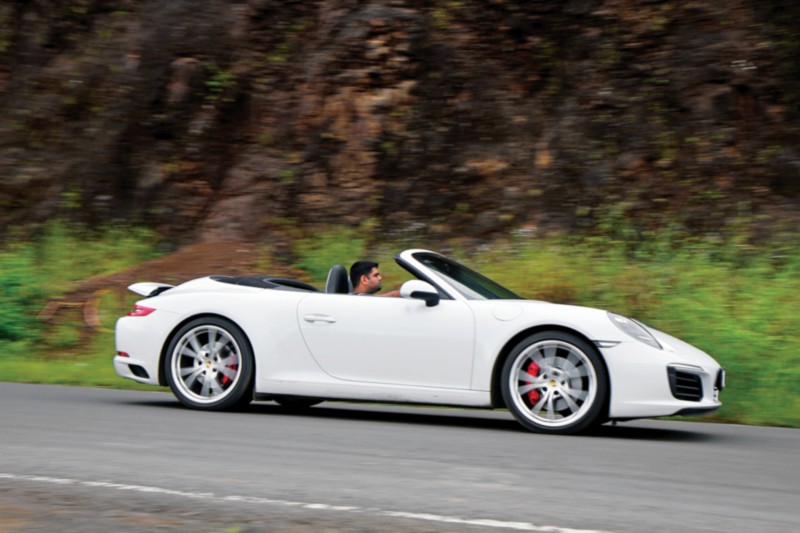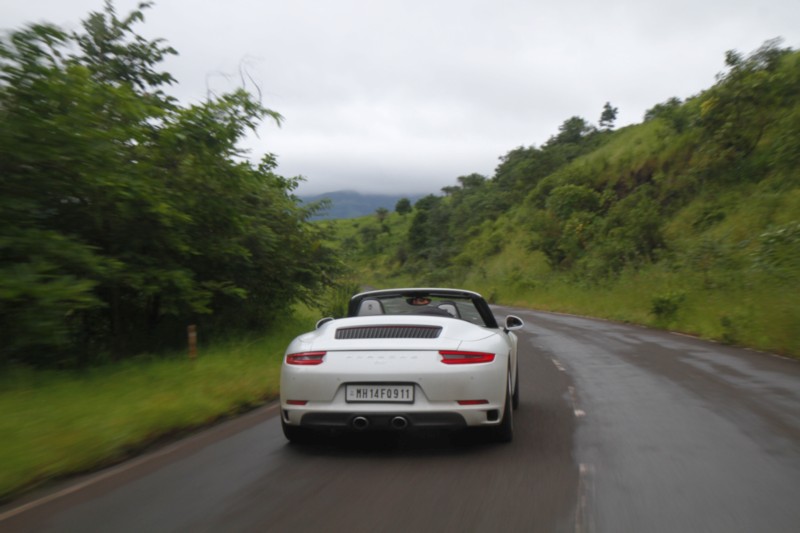I’d started off in ‘Normal’ mode so the engine had a low-pitch bass note all the way, except when it eventually shifted up to fourth and went silent, because at 50 km/h the engine may as well be hibernating; 911s sleep-walk faster than our traffic moves. Not too long on the road out of the city and the traffic thinned out. The Porsche Doppelkupplung (PDK) has been tweaked to be even sharper. What have they done exactly? Well, the first two ratios as well as the seventh are the same, but third to sixth have been tweaked and made slightly taller, so they pull longer. The soundtrack in third is enough to send you into a deeper trance the longer you keep your foot down.
The acceleration isn’t brutal per se, but it does feel quite unforgiving. Porsche wizardry always, always comes to the fore. It’s no surprise that this car — this car — with 420 PS can make bigger, more powerful near-600-PS cars cry and go home to mommy for new bones and shoes. Another bit that had me interested was Porsche’s description of the purpose of the redesigned manifold system. Porsche say that where more air was more power earlier, the disadvantage was that the air “heated up during compression”. The new geometry in the expansion manifold reverses the principle. “Instead of the compression phase, the expansion phase is used in front of the combustion chamber — because the air cools down when it expands.” Still wondering what they’re on about? Me too. Doesn’t matter. Here’s what that means to you.
The dash from zero to 100 km/h is done and dusted in 4.5 seconds; the needle hitting 8k on the way up. There’s a tiny nub of a button in the middle of the drive-mode selector. Push that and you get an instant burst and more wrath-of-god sound to go with it. The quarter-mile was destroyed in an iota over 12 seconds and I was doing almost 190 at the time. The claimed top whack, roof up, is 304 km/h. You want 200? 250? You aren’t asking for much. It’s all illegal on public roads, of course. Go enjoy on a track if you must.
That brings me to the cornering. The essence of a sports car is not just how it feels to drive but what it makes you feel when you drive it. Many of these modern doohickeys, gadgets on wheels that pass off as cars, do all the work, show you numbers, and expect you to smile. Yes, the shallow will grin ear to ear. The 911 — no, it’s not for everyone. First, the steering lets you feel every bit of the road surface. It’s communicative like few others. The suspension plants it down, yes, but it doesn’t do it because it wants to make you feel like Mark Webber, no. It does just enough to ensure you put in an effort and earn that smile. The 911 S wiggles and gives you split-second panic attacks every time you’re a grinning ape on the throttle. There’s a tiny bit of GT2 in there. No, no centre-locking wheels. That balance of joy and terror as you walk the tight-rope of cutting-edge lightweight performance.
It will give you speed. It will give you timings. But it will make you work for them and feel like you’re responsible for achieving them rather than some chipset wired and soldered down by someone in a white coat wearing telescopes as eyewear. The human connection is there. The car can be as wild or as docile as you want it to be. There is traction control but, at times, you would go paranoid and lose your mind looking for that flicker of orange in the console before the car actually loses grip. It’s marvellous!
It’s the sound of the mechanical cohesion, of metal, air and petrol working together in the 3.8, now, in the 3.0; with the added sound of air-locks in operation as the blowers spool up. It’s more bass but it’s just as raw. There still remain just a handful of cars that can hold a candle to the 911. Dr Porsche got it right 53 years ago. Now it’s just about being cleaner and more powerful. Let the designers do the 961 or 717 or whatever’s next. Leave this one alone.

























Leave a Reply